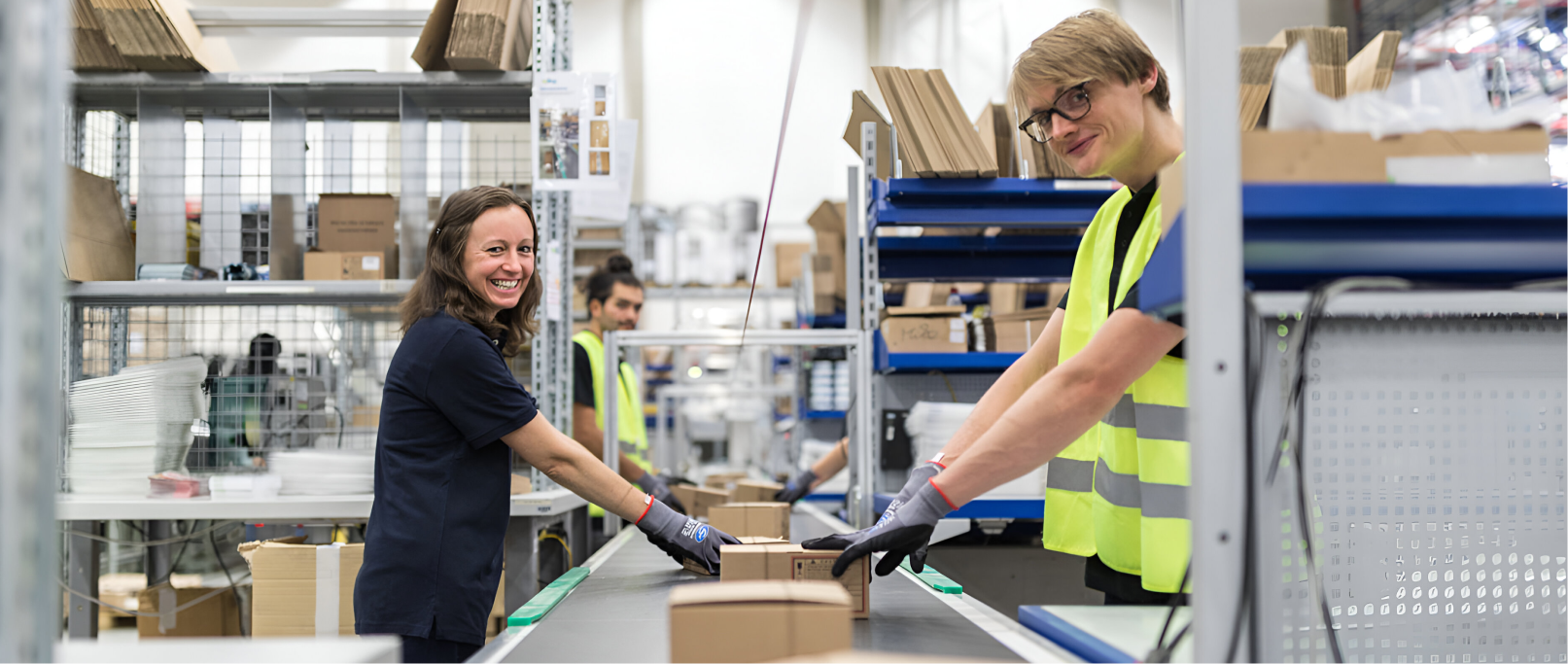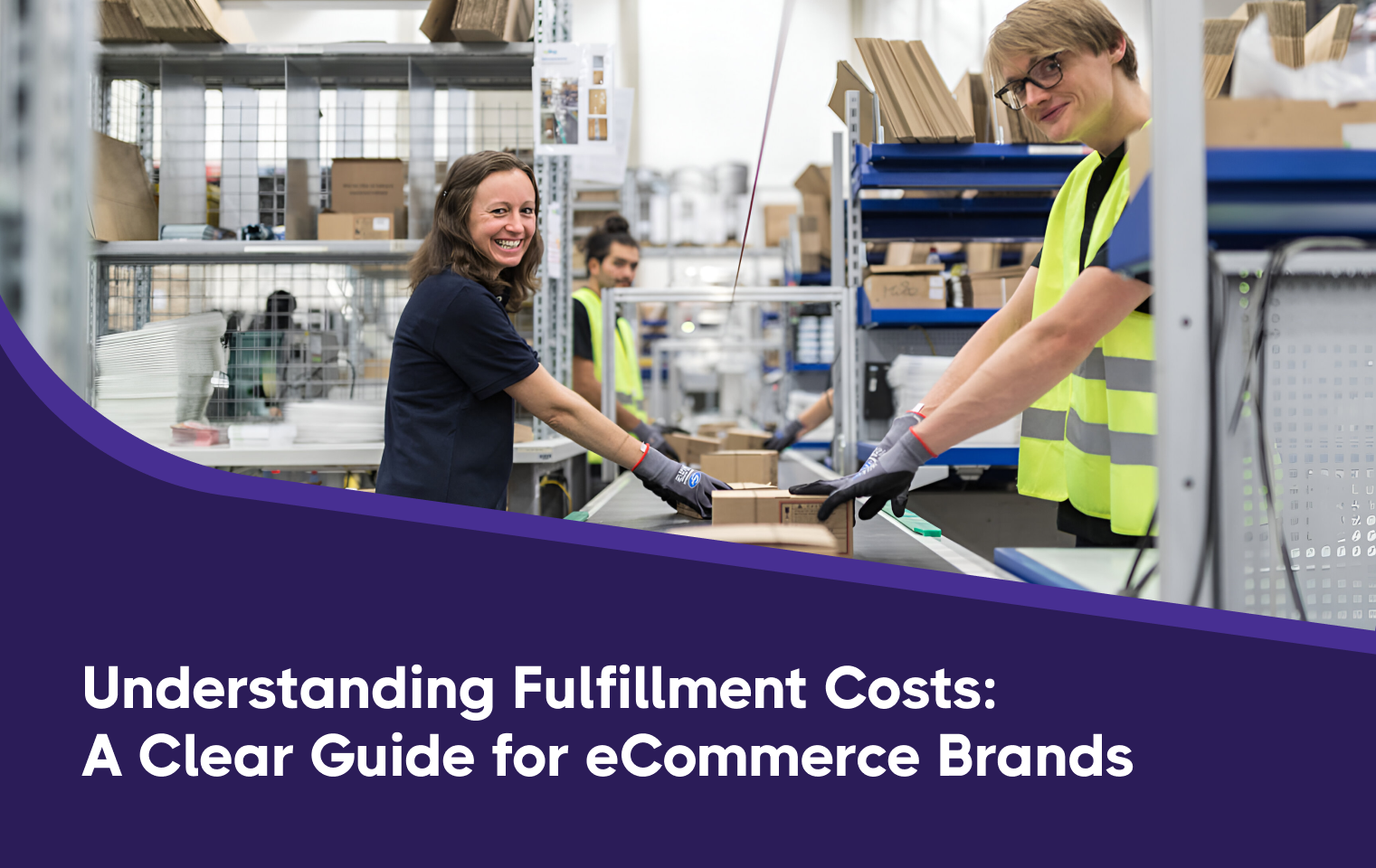When your eCommerce business starts scaling, fulfillment becomes both your biggest asset and a critical cost center. But what are you actually paying for?
Whether you're working with a 3PL provider or considering outsourcing for the first time, fulfillment pricing can feel like a maze. From pick and pack charges to hidden onboarding fees, understanding your 3PL costs can help you optimize your budget, improve your bottom line, and make informed decisions.
This guide breaks down the core components of fulfillment pricing, explains different pricing models, and shares tips to help you manage and reduce your order fulfillment fees effectively.
What are the Core Components of Fulfillment Pricing?
1. Receiving Costs
When inventory arrives at the warehouse, it needs to be counted, inspected, and entered into the system. These receiving costs are typically billed hourly or per unit/carton. Efficient receiving can help avoid delays and inaccuracies that ripple through the rest of your fulfillment process.
2. Storage Fees
This is the cost of holding your inventory in a fulfillment center. It’s usually calculated based on cubic feet or pallet space used per month. Understanding how your inventory moves can help minimize unnecessary storage fees and overstocking costs.
3. Pick and Pack Fees
Pick and pack charges cover the cost of retrieving items from inventory and packaging them for shipment. Some 3PLs include the first item free and charge for each additional item per order. These costs can add up quickly, especially with multi-SKU orders.
4. Shipping Costs
Shipping costs are often the most variable part of the equation. These include carrier rates, shipping surcharges (like fuel or residential delivery), and destination-based pricing. Partnering with a fulfillment provider that has negotiated shipping services can offer substantial savings.
5. Returns Processing
Returns are inevitable in eCommerce. Returns processing fees cover receiving returned items, inspecting them, and restocking (if applicable). A transparent policy here ensures no surprises during high-volume return seasons.
6. Kitting and Assembly
Value-added services like kitting (bundling products) or light assembly are often priced separately. These can be billed hourly or per unit and should be factored into your overall fulfillment strategy.
Additional Fees to Consider
Beyond the core services, some fulfillment companies charge additional fees that you should be aware of:
- Onboarding Fees – Initial setup costs for integrating your systems and onboarding your brand.
- Account Management Fees – Ongoing support from a dedicated representative.
- Custom Packaging Fees – Branded boxes, inserts, or specific packaging requests.
- Labeling and Barcoding Fees – For SKUs requiring specific compliance or retail standards.
- Shipping Surcharges – Unexpected carrier fees for fuel, delivery area, or oversized items.
Understanding Pricing Models
There are two common pricing structures in the fulfillment world:
1. Fixed Pricing
A predictable, flat-rate pricing model that simplifies budgeting. Often offered for smaller businesses or those with consistent order volumes.
2. Activity-Based Pricing
Also known as pay-as-you-go, this model charges based on specific actions taken (e.g., per pick, per pack, per return). It’s transparent but can fluctuate with order volume and complexity.
Some 3PLs also use hybrid models, blending both structures depending on the services used.
How to Calculate Your Fulfillment Cost
Here’s a simple way to estimate your fulfillment cost per order:
(Receiving + Storage + Pick & Pack + Shipping + Returns + Extras) / Number of Orders
Many companies use a fulfillment cost calculator to estimate monthly costs based on volume and service complexity. This helps with forecasting and pricing your products profitably.
Tips for Managing and Reducing Fulfillment Costs
- Forecast Accurately – Avoid overstocking to reduce storage fees and improve inventory turnover.
- Bundle SKUs – Streamline pick and pack with kitting or pre-assembled bundles.
- Negotiate Rates – Work with a 3PL that offers volume discounts or flexible pricing.
- Use Multi-Channel Integration – Centralize fulfillment across platforms for better efficiency.
- Monitor Returns – Analyze why items are returned and improve product listings or QC.
- Automate Where Possible – Tech-forward fulfillment services offer cost savings over time.
Conclusion: Know What You’re Paying For—and Why It Matters
Understanding fulfillment pricing isn't just about cutting costs—it’s about creating a fulfillment strategy that scales with your business. Whether you’re looking at receiving costs, pick and pack fees, or onboarding fees, clarity is key.
By knowing the components of your 3PL costs and how they’re structured, you can partner more effectively with your fulfillment provider, optimize your operations, and ultimately improve your customer experience.
Looking to simplify fulfillment pricing with a trusted shipping company?
eShipper UAE offers transparent pricing, flexible fulfillment services, and expert support tailored for growing eCommerce brands. Contact us today for a personalized quote.
FAQ: Fulfillment Pricing and 3PL Costs
Fulfillment costs in the UAE typically range between AED 11 to AED 55+ per order, depending on order complexity, storage duration, packaging needs, and destination. Pricing may vary further based on the volume and type of products being fulfilled.
A simple formula:
(Receiving Costs + Storage Fees + Pick and Pack + Shipping + Returns + Other Fees) / Number of Orders = Fulfillment Cost Per Order
3PLs use fixed, variable, or hybrid pricing. Fixed pricing offers predictable monthly fees, while activity-based pricing charges per service (like per pick or return).
Profit margins vary but often range between 10%–30%, depending on scale, efficiency, and value-added services provided.
Fulfillment by Amazon (FBA) fees include storage, pick and pack, and shipping costs. These are charged per item and can vary by size, weight, and category.




